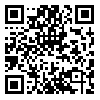BibTeX | RIS | EndNote | Medlars | ProCite | Reference Manager | RefWorks
Send citation to:
URL: http://jdisabilstud.org/article-1-1722-en.html
Background & Objectives: Body Dysmorphic Disorder (BDD) is an obsessive–compulsive condition. BDD is a chronic, disabling, and afflictive psychiatric condition that can lead to severe personal, social, occupational, educational, and familial problems or dysfunction and psychological distress. Patients with body dysmorphic experience numerous negative emotions, such as shame, self–disgust, disappointment, anger, frustration, guilt, doubt, hesitancy, and uncertainty. Therefore, basic and specific interventions about emotions are necessary for this population. A novel therapeutic approach that has received special attention on emotions and the common components of disorders is transdiagnostic treatment. The present study investigated the effects of transdiagnostic treatment on body image avoidance and alexithymia in BDD.
Methods: This was a quasi–experimental research with pretest–posttest and a control group design. The statistical population of this study included all college students referring to Shiraz University’s Counseling and Psychotherapy Center as well as those undergoing plastic surgery in Motahari and Imam Reza Medical Clinics in Shiraz City, Iran, from January 2019 to May 2019. Clinical interviews were conducted for all patients with BDD who were willing to participate in the study. Finally, 30 patients with body dysmorphic disorder were selected by purposive sampling method and randomly assigned to either transdiagnostic treatment or control groups (n=15/group). The inclusion criteria of the study included an age range of 45–18 years, being diagnosed with BDD according to the Diagnostic and Statistical Manual of Mental Disorders, Fifth Edition (DSM–5) criteria, and presenting no comorbid disorders (anxiety, depression, stress, & obsessive–compulsive disorder). Furthermore, the study participants were selected among those who received no other psychotherapy, counseling, and medication programs during the study. The exclusion criteria were substance abuse or dependence over the past 6 months, having any other psychological disorders, concerns about or preoccupation with appearance, better explained by other psychological disorders, like eating disorders. The Body Image Avoidance Questionnaire (Rosen et al., 1991) and the Toronto Alexithymia Scale (Bagby et al., 1994) were administrated at the pretest and posttest phases to collect the necessary data. Then, the experimental group received 12 sessions of transdiagnostic treatment according to Barlow et al.’s protocol (2015); however, the controls received no intervention. Descriptive statistics (e.g., frequency, percentage, mean, & standard deviation) and inferential statistics, including Multivariate Analysis of Covariance (MANCOVA) and univariate Analysis of Covariance (ANCOVA) were employed in SPSS to analyze the obtained data. The significance level of the tests was set at 0.05.
Results: To determine the difference of all components, univariate ANCOVA was performed; the relevant results indicated that after removing the pretest effects, there was a significant difference in all components in posttest scores concerning body image avoidance and alexithymia between the study groups (p<0.001). The MANCOVA data indicated that the mean scores of all components of body image avoidance, including clothing (p<0.001), social activity (p<0.001), eating restraint (p=0.003), as well as grooming and weighting (p=0.003), and all component of alexithymia, including difficulty identifying feelings (p<0.001), difficulty describing feelings (p<0.001), and externally oriented thinking style (p<0.001) significantly decreased in the experimental group.
Conclusion: Based on the present study results, transdiagnostic treatment is effective in improving the avoidance of body image and mood dysphoria in patients with BDD. Therefore, implementing comprehensive intervention programs with a transdiagnostic approach is required for these patients.
| Rights and permissions | |
 |
This work is licensed under a Creative Commons Attribution-NonCommercial 4.0 International License. |





